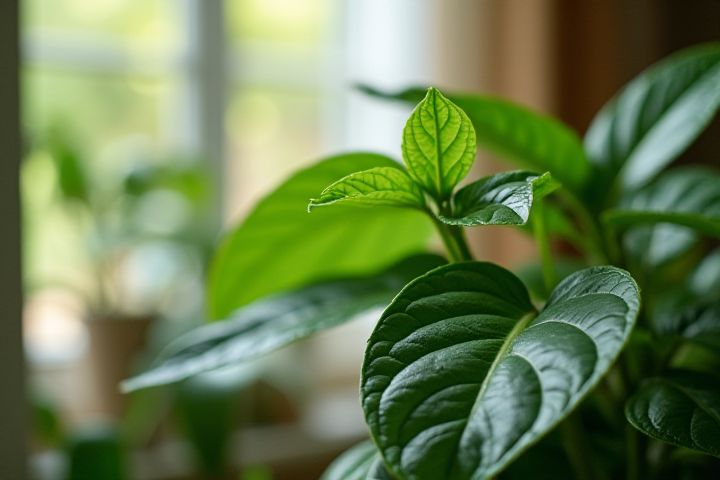
To ensure healthy house plants, first, choose the right pot with adequate drainage holes to prevent root rot. Your plant type determines the ideal watering schedule; for example, succulents require less frequent watering than tropical plants. A suitable indoor location with proper lighting is essential, as some plants thrive in direct sunlight while others prefer indirect light or shade. Regularly check for pests and diseases, and maintain humidity levels appropriate for your plant species to promote growth. Lastly, fertilizing during the growing season can provide essential nutrients, helping your plants flourish year-round.
How To House Plant Care
Proper watering techniques
Proper watering techniques are essential to maintaining the health of your houseplants. Always check the moisture level in the soil before watering; a finger test up to the second knuckle can help you gauge whether it's time to water. When watering, it's best to saturate the soil evenly, allowing excess water to drain from the bottom, preventing root rot. Adapting your watering schedule to seasonal changes and specific plant needs enhances growth and vitality, ensuring your indoor garden flourishes.
Right amount of sunlight
Understanding the right amount of sunlight for your house plants is crucial for their growth and health. Each species has specific light requirements; for instance, succulents thrive in bright, indirect light, while ferns prefer low-light conditions. You should observe your plants for signs of light stress, such as yellowing leaves indicating too much sun or leggy growth suggesting inadequate light. To optimize your indoor environment, position your plants near windows with filtered light or use grow lights to supplement their sunlight needs.
Suitable humidity levels
Maintaining suitable humidity levels is crucial for the health of your house plants, as most thrive in environments between 40% to 60% humidity. You can increase humidity using methods like placing a humidifier near your plants or grouping them together to create a microclimate. Regular misting can also help, but ensure you do this in the morning to allow leaves to dry throughout the day and prevent mold growth. Monitor humidity levels with a hygrometer, aiming for fluctuations that keep your plants comfortable and vibrant.
Correct soil type
Choosing the correct soil type is crucial for successful house plant care. Different plants have specific requirements for soil composition; for instance, succulents thrive in well-draining sandy soil, while ferns prefer a lightweight potting mix rich in organic matter. Always select soil that promotes good aeration and moisture retention tailored to your plant's needs. Regularly check the soil's pH level, as maintaining the right balance can significantly affect nutrient availability and overall plant health.
Appropriate potting containers
Choosing the right potting container is essential for healthy house plant care. Opt for pots with drainage holes to prevent waterlogging and root rot, as excess moisture can lead to fungal issues. Consider the material of the container; terracotta allows for breathability while plastic retains moisture, catering to various plant needs. Remember, the size of the pot should accommodate your plant's root system, offering room for growth without being overly spacious to avoid soil retention issues.
Fertilization schedule
Establishing an effective fertilization schedule is essential for optimal house plant growth. For most indoor plants, applying a balanced, water-soluble fertilizer every four to six weeks during the growing season (spring to fall) promotes healthy foliage and vibrant blooms. Always dilute the fertilizer according to the package instructions to prevent root burn and ensure even nutrient distribution. Monitor your plants for signs of nutrient deficiency, such as yellowing leaves or stunted growth, and adjust your fertilization frequency as needed to cater to their specific requirements.
Pruning methods
Pruning is essential for maintaining the health and shape of your houseplants, promoting vigorous growth and preventing disease. To effectively prune, use clean, sharp shears to remove dead or yellowing leaves, typically about 1/4 inch above a node, which encourages new growth. For flowering plants, timing your pruning to right after blooming can boost flower production for the next season. Regularly assess your plants, pruning every 4-6 weeks during the growing season, ensuring a lush, vibrant indoor garden.
Pests and disease management
Regularly inspect your house plants for signs of pests such as spider mites, aphids, or mealybugs, which can cause significant damage if left untreated. Implement preventive measures, including maintaining proper humidity and air circulation to create an unfavorable environment for pests. Should you discover an infestation, consider using insecticidal soap or neem oil as organic treatments to effectively manage and eliminate these threats. To prevent disease, ensure that your plants are not overwatered, as soggy soil can foster root rot and fungal infections; always allow the top inch of soil to dry before rewatering.
Repotting process
Repotting is a crucial aspect of house plant care that ensures your plants thrive by providing them with fresh soil and room to grow. Begin by carefully removing the plant from its current pot, gently loosening the roots, and inspecting for any signs of root rot or damage. Choose a pot that is 1-2 inches larger in diameter than the previous one and fill the bottom with fresh, well-draining potting mix to promote healthy growth. Once the plant is positioned in the new pot, add soil around the sides, ensuring the root ball is slightly below the rim, then water thoroughly to settle the soil and eliminate air pockets.
Temperature requirements
Most houseplants thrive in temperatures ranging from 65degF to 75degF (18degC to 24degC). Certain tropical species, such as orchids, prefer higher humidity and warmth, ideally around 70degF to 80degF (21degC to 27degC). Conversely, succulents and cacti typically do well at slightly cooler temperatures, retaining optimal growth between 60degF and 75degF (15degC to 24degC) during the day. It's crucial to monitor your plant's response to temperature changes, as exposure to drafts or sudden temperature fluctuations can stress them, leading to problems like wilting or leaf drop.
